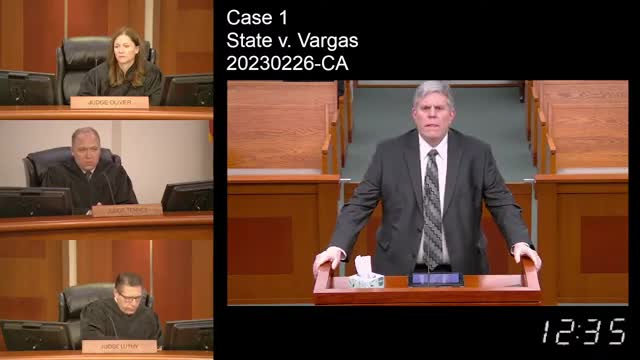Defense attorney argues blurred video impacts jury's perception of victim's testimony
March 12, 2025 | Utah Court of Appeals Live Stream, Utah Appellate Court, Utah Judicial Branch, Utah
Thanks to Excel Chiropractic and Scribe from Workplace AI , all articles about Utah are free for you to enjoy throughout 2025!

This article was created by AI using a video recording of the meeting. It summarizes the key points discussed, but for full details and context, please refer to the video of the full meeting. Link to Full Meeting
At the heart of the discussion was the testimony of the alleged victim, who described waking up naked and interacting with Vargas in a manner that raised questions about her state of mind and consent. The defense argued that the blurred nature of the video obscured critical details that could influence the jury's perception. They contended that the jury might not fully grasp the significance of the victim's actions, particularly her lack of hesitancy in approaching her clothes after the incident.
The defense attorney emphasized that the blurring of the video could diminish the impact of the evidence, suggesting that the jury might not perceive the victim's nudity as a factor in her credibility. They argued that seeing her fully unclothed could evoke a stronger emotional response from the jury, potentially swaying their judgment regarding her fear and consent.
However, the prosecution raised concerns about the potential for the video to inflame the jury's emotions against Vargas. They questioned whether revealing the unblurred video might inadvertently lead to a negative perception of the defendant, complicating the narrative of consent and victimization.
Throughout the proceedings, the judges probed the defense's strategy, questioning whether the risks associated with showing the unblurred video outweighed the potential benefits of undermining the victim's credibility. The defense maintained that presenting the full context of the video was essential, arguing that it could provide a clearer picture of the events and the victim's behavior.
As the arguments unfolded, the courtroom reflected the broader societal challenges of navigating sensitive issues of consent, victimhood, and the complexities of human behavior in traumatic situations. The judges' deliberations highlighted the delicate balance between presenting evidence and protecting the dignity of individuals involved in such cases.
The outcome of this case could set important precedents for how similar evidence is handled in the future, emphasizing the need for careful consideration of both legal strategy and the emotional weight of the evidence presented. As the court continues to deliberate, the implications of their decision will resonate far beyond the walls of the courtroom, touching on the very fabric of justice and the treatment of victims in the legal system.
Converted from 20230226 State v. Vargas audio file meeting on March 12, 2025
Link to Full Meeting
Comments
View full meeting
This article is based on a recent meeting—watch the full video and explore the complete transcript for deeper insights into the discussion.
View full meeting



